Updated on 5/17/17 from an article originally published 4/11/2013.
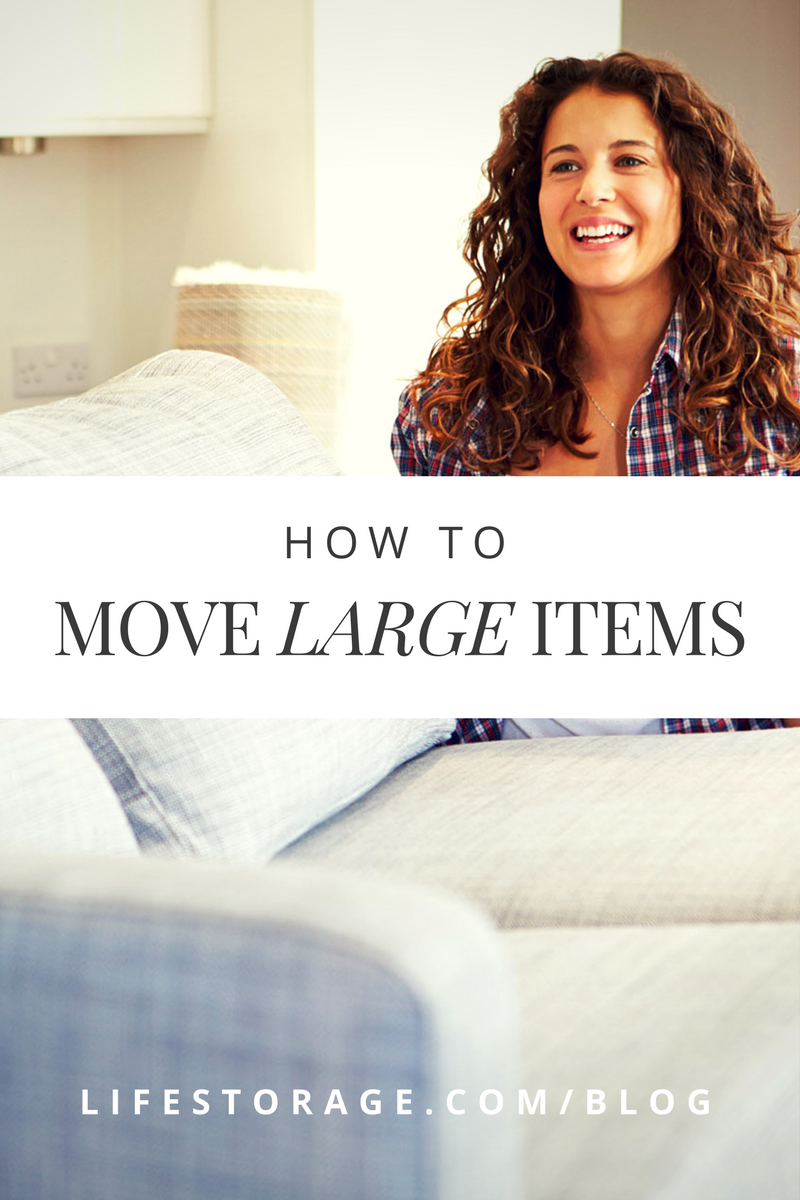
Unless you’re a professional mover, chances are you’ve had trouble figuring out how to move large items. Moving heavy furniture and loaded boxes can do a number on your back and joints. You may even risk damaging the furniture you’re attempting to move. But sometimes moving objects heavier than ourselves must be done. If you’re trying to save money on your move, DIYing is the best way to go.
When you’re moving large items into or out of a home, apartment, office or storage unit, you don’t want it to be more labor intensive than it needs to be. Learn how to move the right way so that large sofa of yours doesn’t come crashing down a set of stairs, taking everything out in its path.
Here are some tips to make moving big, awkward items easier and safer.
1. Use Brain Instead of Brawn
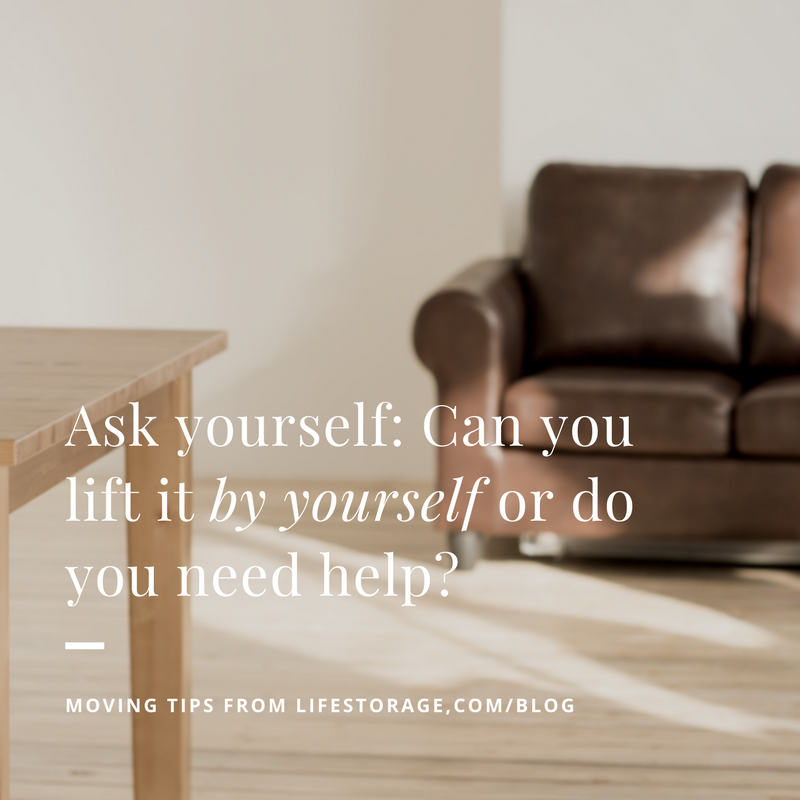
Take time to think the process through before you lift a finger.
Will the refrigerator fit through the door or around a corner as is?
Measure it to find out. If it won’t make it, remove the door in its way and the doors on the fridge. Refer to the owner’s manual if you need help to figure this out.
Can you lift it by yourself or will you need help?
Help can come in the form of a friend, a professional mover, or a tool (more on that in a minute). Remember, if you have any doubt about your ability to lift and carry something, don’t do it. You’ll risk throwing out your back, breaking a bone, or doing serious damage to the object and anything it encounters, any of which can cost you time, money or both.
2. Remove as Much as You Can
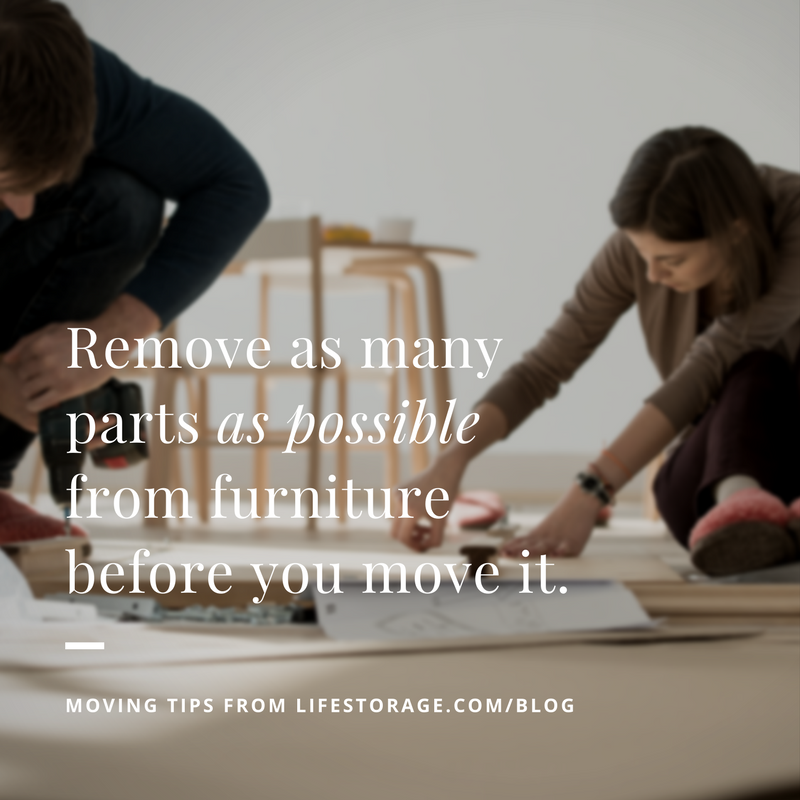
You can make bulky things easier to move by removing all attached parts. Don’t move a desk with drawers and contents still inside. Instead, empty drawers, shelves, etc. Then, remove those drawers and shelves if possible. If you can’t remove them, tape them shut so they don’t open while you carry them.
You’ll also want to remove furniture legs and protruding handles, pulls, and knobs. Be sure to label everything you remove so you can put it back in its correct place. Painter’s tape is a great option for labels on the fly.
Not only will this make your furniture and appliances lighter, but there will be fewer parts to scratch floors, gouge walls, and pinch fingers.
3. Protect Your Possessions During the Move
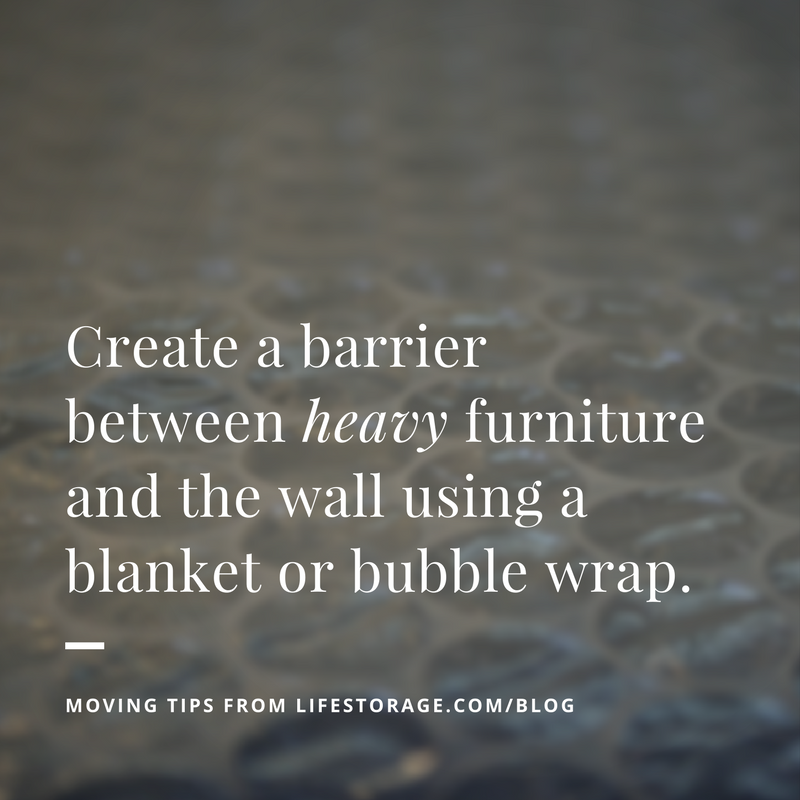
Always use furniture blankets, pads or bubble wrap. Be sure the protective covering is tightly secured to your furniture with tape so it doesn’t slip while you’re carrying it.
No matter how careful you think you are, sometimes carrying heavy furniture can make us more clumsy. Catching your balance while walking down steps can result in a desk getting slammed against the wall. Creating a barrier between the object you’re moving and any other surrounding objects will help prevent damage.
4. Push Instead of Pull, the Right Way
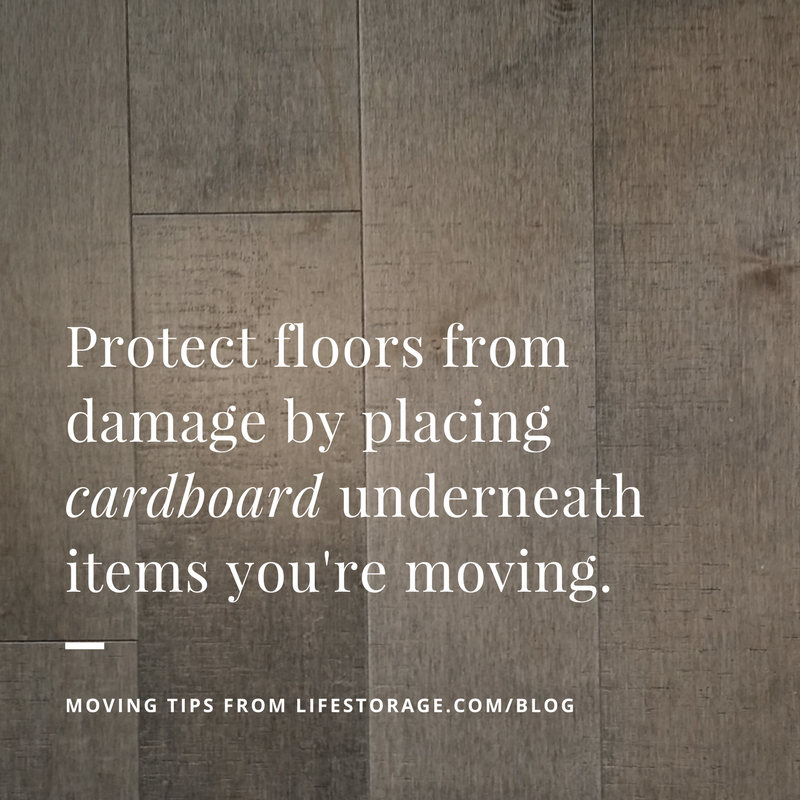
Pushing is a lot easier on your body than pulling, so don’t be afraid to push heavy furniture where it needs to go before having to lift it. Also, pulling tends to put extra strain on your back that pushing does not.
But unless you want to deal with refinishing the floor or replacing ripped carpeting, put cardboard or an old rug or sheet under the furniture and use that to pull your item across the floor.
Adding a carpet or other material under the object will help prevent against scratches on the floor and will actually make pushing easier.
There are gliders and other tools that can be used that will make pushing much more efficient and much less risky.
5. Don’t Forget Essential Moving Tools
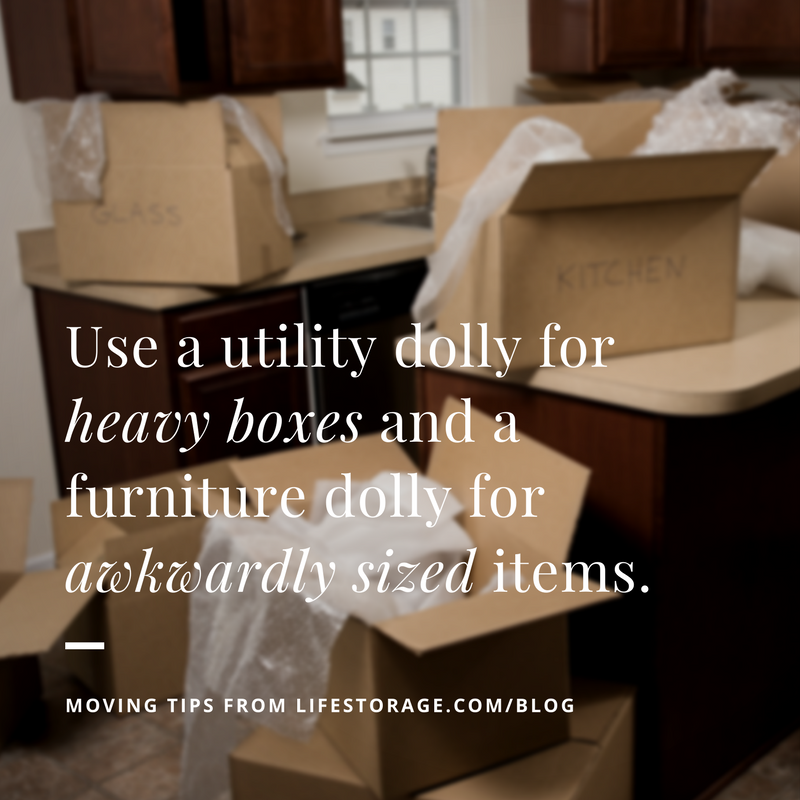
Have you ever wondered how the ancient Egyptians built the pyramids? We can be fairly certain they made use of basic tools that allowed them to move heavy objects. The same principles apply to entertainment units, washing machines, and file cabinets in modern day moving. There are highly effective tools at our disposal to help move heavy furniture and boxes.
Lifting Straps
This moving tool works like a pulley system. Imagine the pulley system that’s used to lower a grand piano out of a fourth-floor window. On a smaller DIY-scale, you could employ moving/lifting straps or strong rope and have your body parts function as the fixed pulley.
Using physics – basic leverage and your own strength – you can lift pretty heavy stuff with ease. How? Lifting straps put less strain on your body by lowering the center of gravity on the item you’re moving.
Utility or Furniture Dolly
Another essential piece of moving equipment is the furniture and utility dolly.
A utility dolly is the upright tool with two wheels. Use these to stack heavy boxes. A furniture dolly is flat and has four wheels. This tool is ideal for moving large, awkwardly sized items. Don’t forget to use furniture straps to secure items to your dolly!
Storage Tip: Moving dollies are available for rent. You may also want to move your items into a storage unit. Many self storage facilities will provide a moving dolly for free to move stuff in when you rent a storage unit.
Stair Rollers
Stair rollers attach to heavy objects so they can be easily rolled down steps. Don’t use this tool if you can’t safely guide the furniture down the stairs. This tool is best employed with more than one person.
Glides
Glides (aka sliders) are a sophisticated version of that old rug we suggested for sliding furniture across the floor. They’re typically plastic disks that fit under heavy furniture so that it will glide somewhat effortlessly across the floor when you push it.
You might not be able to move a refrigerator on your own, but equipped with common sense, the right tools and, if necessary, volunteer or hired help, you should be able to move mountains of stuff safely and easily. Did we miss a tip? Let us know in the comments below!






